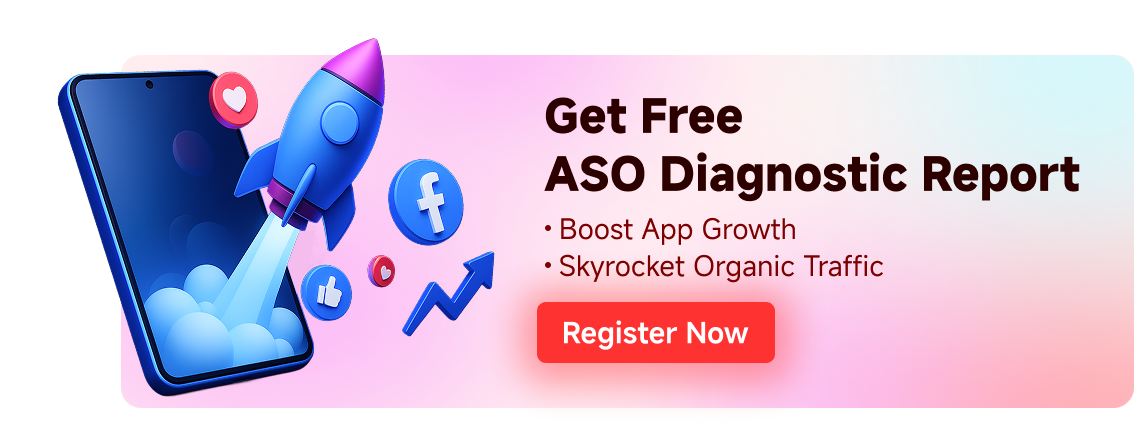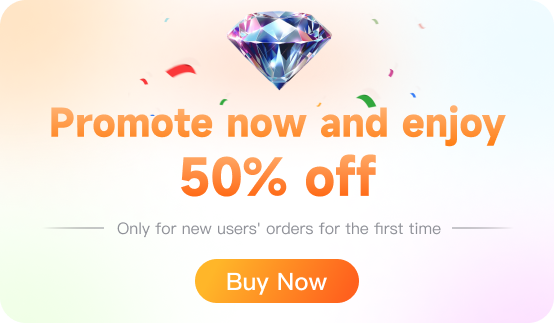Free consultation with ASO specialists
Doing ASO for the first time or have no idea how to carry out targeted optimization of your app?
We offer one-on-one customized services provided by app marketing specialists
Cracking the ASO Conversion Funnel: 5 Steps to Convert Store Visitors into High-Value Users
2025-07-07
Article Summary: By optimizing the five key stages of exposure, clicks, downloads, activations, and retention, systematically improve ASO conversion rates. AppFast shares practical strategies such as keyword optimization, page A/B testing, and ASA collaboration to help you convert app store traffic into high-value users.
What is the App Store Conversion Funnel?
The App Store Conversion Funnel is a model that describes the complete path of users from their first discovery of an app to becoming high-value users. It is the core framework for converting store visitors into actual users. This funnel is like a "layered screening" process, with each stage corresponding to a key decision point for users. Any loss at any stage may lead to the loss of potential users, so it is crucial to optimize each stage to reduce losses and improve conversion efficiency.
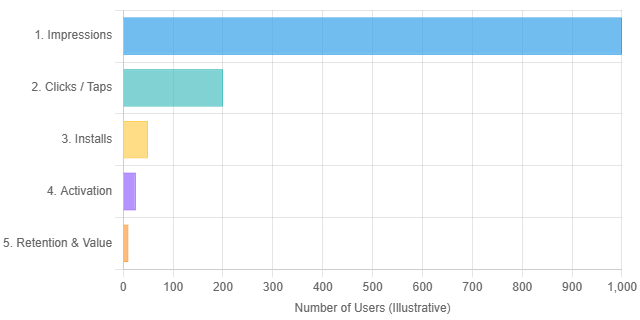
The typical stages include:
-
Exposure Stage : refers to the process of an application being seen by potential users, such as appearing in search results lists, app store recommendations, and category rankings. The core is to improve the visibility of the application - to give more target users the opportunity to "discover" the application;
-
Click Stage : When users see the app, they click to enter the details page because of their interest. The conversion at this stage is directly related to the "first impression information" such as the app icon, title, ratings, and brief description. The stronger the appeal, the higher the willingness to click;
-
Download Phase : After the user enters the details page, the key link to decide whether to install the application is that the application screenshot, detailed description, preview video, user ratings and reviews become the core of decision-making. Whether it can clearly convey value directly affects the willingness to download;
-
Activation Phase : After users download and install the app, they open it for the first time and complete key operations (such as registration, filling in information, and experiencing core functions). The smoothness of this stage determines whether users "really start using" the app;
-
Retention and Value Stage : Users continue to use the app and become paying users or high-engagement users, involving in-app feature experience, operational activities, user services, etc., which is the core of measuring the long-term value of the app.
The entire funnel process is like a gradual screening process: at each step, a certain proportion of users will be lost, so it is crucial to optimize each stage to reduce loss and improve conversion rates. By analyzing and improving each link in the conversion funnel, developers can more effectively convert store visitors into real users and further cultivate them into high-value users.
Why is optimizing the conversion funnel critical to app growth?
In the current highly competitive app store environment, optimizing the conversion funnel is key to achieving sustainable growth. The following chart shows the significant impact of optimizing key elements on the app store page on improving conversion rates:
The Effect of App Store Page Optimization on Conversion Rate
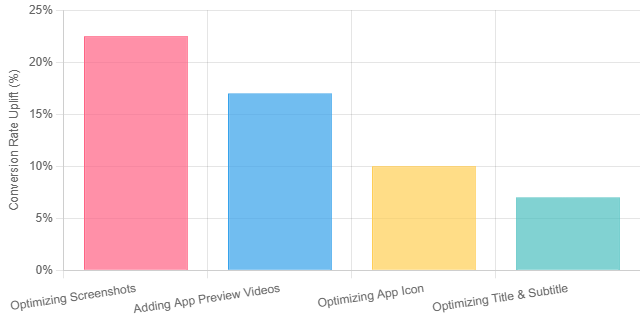
As shown in the figure, optimizing screenshots can increase conversion rates by 21-24%, and adding app preview videos can bring about a 17% increase. These data intuitively show that even detail optimization can greatly improve the conversion efficiency from visitors to downloads.
More importantly, the optimization of the conversion funnel will form a "virtuous circle": the app store algorithm will regard high conversion rate as a signal that "the app is popular and highly matched with user needs", and thus give higher ranking in search results. This means that optimization can not only directly increase downloads, but also improve natural exposure, so that more users can discover the app through free channels such as search.
At the same time, accurate funnel messaging can better align user expectations with actual experiences. If the app actually delivers on its promises, users are more likely to stay rather than uninstall, which will improve retention rates. Higher retention rates will further boost app store rankings, ultimately increasing user lifetime value (LTV).
5 Steps to Convert Store Visitors into High-Value Users
Step 1: Optimize keywords to improve visibility and relevance
Keywords are the "bridge" for applications to be searched in the application store, which directly affect the exposure of applications and the match with user needs. It is the basic link of ASO.
-
Keyword Research
First, brainstorm to sort out the core functions of the application (such as "bookkeeping", "fitness", "photography"), and possible search scenarios for users. Then, use ASO tools (such as UPUP) to analyze the keywords used by competitors, while incorporating short-tail words with high search volume and long-tail words with high conversion rates, to establish a comprehensive keyword pool;
-
Filtering and Prioritizing
When filtering from the keyword pool, you need to combine three core indicators: search volume (the more users search, the better), competition difficulty (the fewer applications compete, the better), and relevance (the more matching with application functions, the better). Prioritize keywords with "high search volume + high relevance + medium to low competition", while not ignoring long-tail words with "low search volume but high precision" - these words have less traffic, but user needs are clear, and conversion probability is higher;
-
Integrate app metadata
Different app stores have different keyword carrying positions: Apple App Store can put keywords into the app name (within 30 characters), subtitle (within 30 characters) and hidden keyword field (within 100 characters); Google Play mainly relies on the title (within 50 characters) and long description (within 4000 characters). Note: Keywords need to be naturally integrated, avoid piling up, otherwise they may be judged as cheating by the algorithm;
-
Continuous monitoring and iteration
The search trends and competitive strategies of the app store will change constantly. You need to regularly track the ranking, exposure and downloads brought by keywords through tools. If a keyword has been ranked low for a long time and there is no conversion, it can be replaced with a new effective word; at the same time, pay attention to the user search term report of the app store (such as the "search term" data of App Store Connect), and find out the new phrases actually searched by users (such as "student party accounting app"), and supplement them into the keyword strategy in time.
👉 Is your app keyword layout accurate? Get a free keyword diagnosis report!
Keywords are the foundation of ASO, but it is not easy to find high-quality keywords with "high search volume + low competition + high relevance". Contact us immediately for a free professional ASO diagnosis. You will get:
-
Your core keywords current search ranking analysis
-
Keyword Coverage Comparison Report with Competitors
-
3-5 high potential long-tail keywords that you have ignored are recommended
-
Initial keyword optimization suggestions for your category
Step 2: Optimize the app store page to improve conversion rates
When users click to enter the app details page, the page elements will directly determine whether they will click the "download" button. The core of this step is to make the page more "persuasive" and convert visitors into download users.
The core elements that need to be optimized include:
-
App Icon :
It is the visual element that users notice first in search results and rankings, and it is even more likely to attract attention than the title. When designing, you need to follow: comply with platform specifications (such as App Store icon is a rounded rectangle , size suitable for different devices), simple and easy to identify (avoid complex patterns, core information can be seen clearly in small sizes), style matching positioning (children's App uses bright colors, business App uses simple texture), and at the same time form differences among similar icons (such as financial management Apps are mostly blue, you can try to add gold elements to highlight the "income" attribute);
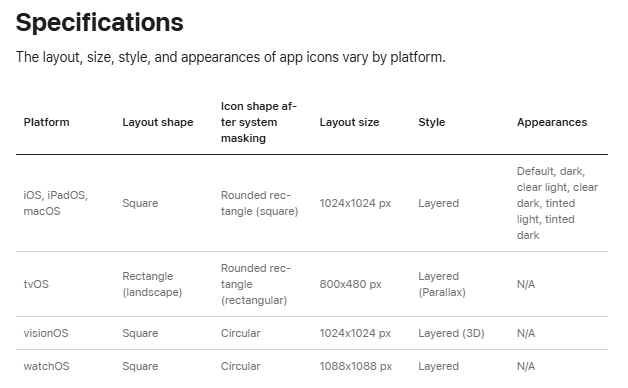
-
Title and subtitle :
The title needs to convey the core value of the application in a short time, and it is best to include 1-2 core keywords (such as "Mint Health - Diet Management Tool"); the subtitle supplements the unique advantages or usage scenarios of the application (such as "3 million+ recipes, easy to record calories"), so that users can quickly understand "what this application can help me do";
-
Application Description
Although only less than 2% of users will read the long description, it still needs to be optimized. On the one hand, keywords should be naturally integrated to improve search relevance. On the other hand, the "benefits" should be explained in user-oriented language (such as "no need to manually record accounts, automatic synchronization of bank card consumption, monthly account generation with one click" instead of "support for multi-account synchronization function"). The core functions can be listed point by point, key information can be bolded, and high-frequency positive points in user reviews (such as "98% of users reported a 50% increase in accounting efficiency") can be appropriately added to enhance credibility;
-
Screenshots and Preview Video
This is the "top priority" that affects download decisions. Data shows that optimizing screenshots can increase conversion rates by 21-24%, and adding videos can increase them by 17%.
Screenshots: It is recommended to choose the most appealing images for target users in the application and add concise annotations or highlights. The first screenshot is usually the most important because it is the first thing users see when they scroll through. Research shows that users form their first impression within 50 milliseconds of seeing the screenshots. Therefore, the first screenshot should highlight the core features or use cases of the application so that users can immediately understand "what this application is for". Subsequent screenshots can showcase other major features, characteristics, or user reviews of the application. Each screenshot should have a clear theme and beautiful images, avoiding clutter. If possible, prepare localized screenshots for different markets or audiences to enhance relevance and intimacy.
App Preview Video: A dynamic video that shows how the app works in 30 seconds is more convincing than static screenshots. When creating a preview video, focus on the user's usage scenario and highlight how the app solves problems or brings fun. The first few seconds of the video are crucial and need to quickly capture the audience's attention (for example, by showing the app solving pain points). Keep the pace brisk (avoid lengthy introductions) and add subtitles (most users will watch with the sound off). Also, comply with platform guidelines (such as App Store videos are no more than 30 seconds Ratings & Reviews Google Play supports longer videos but recommends highlighting the key points in the first 30 seconds );
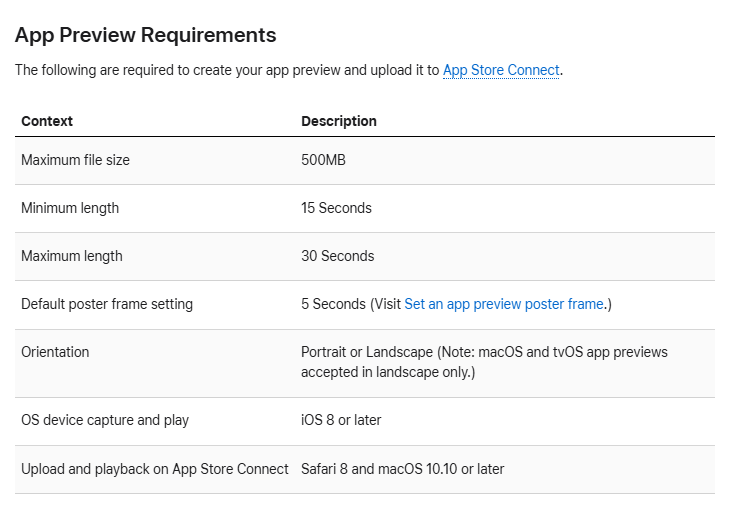
-
Ratings and Reviews
High ratings (4.5 stars and above) and positive reviews can significantly lower the decision-making threshold for users. You need to actively guide positive reviews: within the app, choose the right time (for example, when the user completes a certain achievement or after using it for a period of time) to politely ask the user to give an evaluation. It should be noted that the frequency and method of requesting evaluations should be moderate to avoid disturbing the user. In addition, take every user review seriously, especially negative feedback. Timely reply in the comment area and try to solve the user's problem, which not only helps to improve the experience of this user, but also shows the developer's sense of responsibility and positive attitude to other potential users.
Ratings and Reviews Keywords bring traffic, but the page conversion rate is low? Get a collaborative diagnosis plan for "keywords + pages"! After your ASO keywords attract users to click, whether the screenshot/description can accurately convey value determines the final download. AppFast provides you with:
✅ Keyword-page consistency detection: Is the traffic keyword prominently displayed in the screenshot/title?
✅ High churn page element positioning: Find out the key factors in the screenshot/description that cause users to bounce
✅ Exclusive metadata optimization plan: Based on your category and keywords, customize page optimization suggestions
Step 3: Continuously optimize the conversion funnel through A/B testing
The "best solution" on the app store page is not determined by "feelings", but verified through A/B testing. A/B testing means: create 2 versions of the same element (for example, version A uses a blue icon, and version B uses a green icon), randomly let different user groups see it, compare which version has a higher conversion rate, and thus select the optimal solution. Even if there is a 5% improvement, it can bring thousands or even tens of thousands of additional downloads under high traffic.
Key principles of A/B testing :
-
Single variable
Test only one element at a time (e.g., change the screenshot but not the title or icon), otherwise you won't be able to determine which element affected the conversion (e.g., if you change both the icon and the screenshot, you won't be able to determine whether it was the icon or the screenshot that improved the conversion);
-
Clarify assumptions and metrics
Before testing, make a hypothesis (such as "highlighting the word 'free' in screenshots can increase download rates"), set the core indicator as "page conversion rate" (download volume/visit volume), and refer to click-through rate, next-day retention, etc. as auxiliary indicators;
-
Sufficient sample size
If the number of users tested is too small, the results may not be statistically significant. Therefore, ensure that the test runs for a long enough time (for example, more than one week) to cover user behavior on different dates and at different times. Apple and Google's official testing tools usually prompt how many impressions or downloads are needed to achieve statistical significance, which you can refer to.
-
Use the tools
Apple's App Store Connect provides a Product Page Optimization (PPO) feature that allows developers to test screenshots, preview videos and icons on the App Store A/B testing Google's Play Console also has an Experiments feature, which can be used to conduct A/B tests on the title, short description, and screenshots of Google Play applications. These official tools directly test in the real application store environment, with the most reliable results. Third-party tools (such as StoreMaven) can be used for simulated testing before launch, assisting in quickly screening ideas;
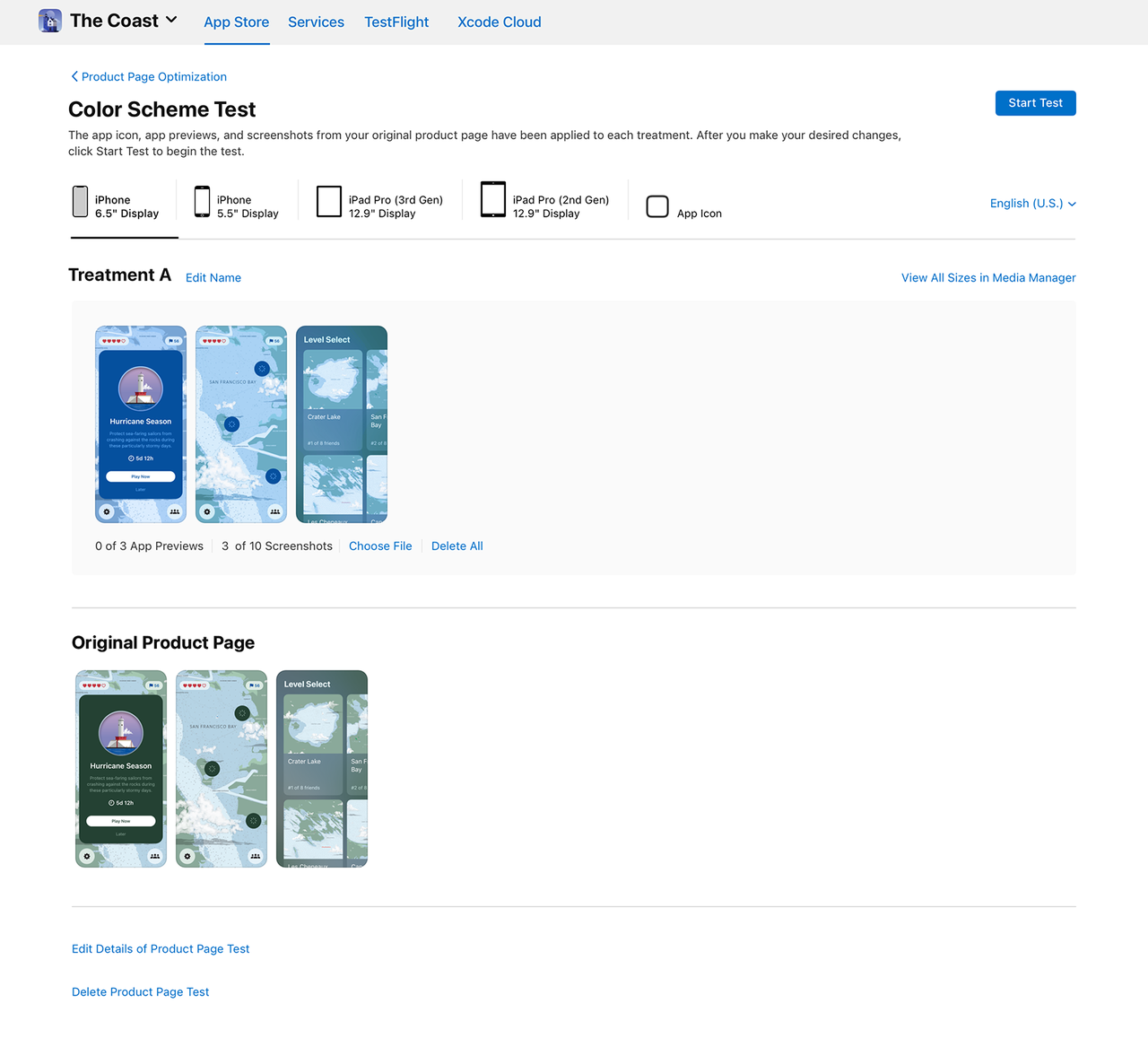
-
Implementation and Review
If a variant is clearly better than the control (usually with 90% or 95% statistical confidence), you can apply it to your production store listing. Even if the test results are not statistically significant, you may still gain valuable insights (for example, if the two versions are too similar for users to notice). Record the test results to inform future optimization decisions.
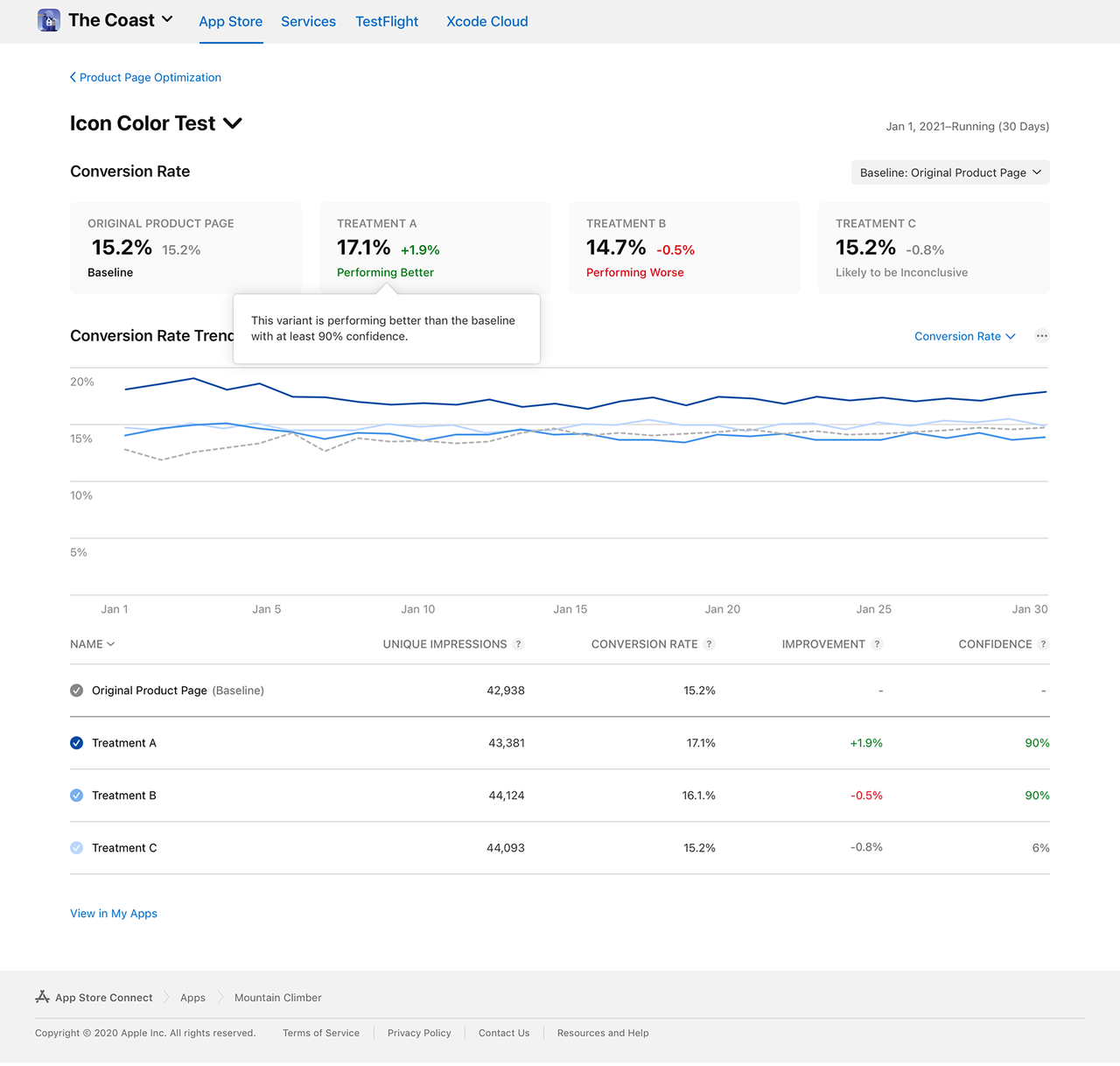
Step 4: Collaborate with User Acquisition (UA) and ASO to expand the scale of high-value users
User acquisition (UA, such as paid advertising) and ASO are not isolated. The two can achieve a "1+1>2" effect: ASO improves the conversion efficiency of natural traffic, UA expands the traffic base, and at the same time, UA data feeds back to optimize ASO. In this part, we will take Apple Search Ads (ASA) as an example to elaborate.
Collaborative Strategy :
-
Information Consistency : After users click on the ad and enter the app store, if the advertised points are not reflected in the page, they will give up downloading due to "expectation mismatch". Therefore, the advertising materials need to be aligned with the core information of the page - If you emphasize "easy bookkeeping, one-click report generation" in the ad, then the title and screenshots of the app store page should also highlight the simplicity and reporting functions of the bookkeeping application.
-
Data Interoperability : Paid ads can provide accurate user preference data (such as Apple Search Ads showing that the click-through rate and conversion rate of the "Quick Accounting" keyword are the highest), and these high-conversion keywords can be added to the ASO metadata to improve natural rankings; conversely, high-conversion pages optimized by ASO (such as optimized screenshots) can be directly reused as advertising materials to reduce the CPI (cost per installation) of ads;
-
Avoid overlapping traffic : If the natural ranking of a keyword is already stable in the top 3 and brings a large number of free downloads, then investing in expensive paid ads to grab that keyword will result in "using paid traffic to grab users from natural traffic", causing a waste of budget. It is necessary to regularly analyze the natural keyword rankings and the list of paid keyword placements, reduce the paid bidding for keywords with high natural rankings, and shift the budget to keywords with low natural rankings but good conversion rates;
-
Full-chain collaboration : Full-chain value enhancement: ASA not only brings downloads, but also focuses on user quality. Need to work with the product team: After users obtained through ASA enter the application, the new user experience should quickly fulfill the advertising promise; at the same time, using the user portrait data provided by ASA (such as user intent behind search terms, geographical location, device type) can guide the localization optimization of ASO (such as optimizing screenshot copy for specific high-conversion areas).
Step 5: Increase user retention and convert one-time downloads into long-term value
Download is just the beginning. User retention (continuous use) and value conversion (payment, sharing) are the core of application profitability. High retention not only improves LTV, but also makes users more likely to leave good reviews, which will feed back to the app store rankings and form a positive cycle.
The core method to improve retention :
-
Optimize new user guidance
If users do not feel the value of an app within 3 minutes after opening it for the first time, 70% will uninstall it. The guidance should be simple (avoid registration processes with more than 6 steps, support one-click login with email/phone number), focus on core functions, and convey the "aha moment" (i.e., the core value brought by the application). The process can be simplified based on user behavior (such as skipping guidance for old users and learning in steps for new users);
-
Continued Value
Users will stay because of "usefulness" - tool apps regularly update features, content apps daily update materials (such as short video apps push popular challenges), and operation activities maintain activity (such as sign in for 7 days to earn points, points exchange for membership). Add game design (such as continuous use for 30 days to unlock the "loyal user" badge, friend ranking list), use users' "sense of achievement" and "social needs" to improve stickiness;
-
Personalized Experience
Provide customized services through user behavior data (such as usage frequency, preferred features) - music apps recommend playlists based on listening records, financial management apps recommend suitable financial management plans based on deposit amounts, and push notifications also need to be accurate to avoid "junk pushes". In this way, users will not feel disturbed and are more likely to click and participate;
-
Initiative communication and feedback
Send recall notices to silent users (such as those who have not opened the app for 7 days) (remind them of the benefits of the application or new features); push exclusive benefits to active users; at the same time, set up feedback entries in the application (such as "Help Center - Feedback"), reply and solve problems in a timely manner, inform users through announcements or update logs, and make users feel valued;
-
Data-driven iteration
Monitor key retention metrics (next day, 7-day, and 30-day retention). If a certain link is severely lost (such as low 7-day retention), locate the cause through user behavior analysis and optimize it accordingly. Through A/B testing You can also try different retention strategies, such as testing two different push recall texts to see which one works better. Continuous experimentation and improvement are needed to gradually improve overall retention rates.
Conclusion
Cracking the conversion funnel of the app store is not easy, but through the above 5 key steps - optimizing keywords, optimizing the app store page, A/B testing iteration, coordinating UA and ASO, and improving user retention - you can systematically improve the efficiency of converting store visitors into high-value users. From increasing exposure to promoting downloads, and then cultivating long-term active users, every step requires data support and continuous optimization. In practice, please remember In combination with the characteristics of its own applications , adjust strategies flexibly, and pay close attention to user feedback and market changes. Continuous ASO optimization and user operation will help your application stand out in the fierce competition of the app store, achieving dual growth in downloads and user value.
👉 To crack the conversion funnel, you need a systematic strategy and professional execution! AppFast helps you achieve dual growth in downloads and value
From keyword exposure to high-value user retention, the optimization of the conversion funnel is closely linked. AppFast provides a one-stop ASO and user growth solution, combining data-driven and industry insights to tailor solutions for you:
-
Deep ASO Optimization: Keyword Strategy, Metadata Optimization, Material A/B Testing, Ratings and Reviews Management.
-
Intelligent UA Collaboration: Precise user acquisition strategy, connected with ASO data, and maximized ROI.
-
Retention Enhancement Engine: Analyze user behavior and design strategies for activation, retention, etc.
-
Data-driven decision-making: Provide clear and transparent data dashboards and effect reports, and continuously optimize.
Learn how AppFast can turn your visitors into high-value users and unlock growth potential!
Get exclusive Growth Plan Ratings & Reviews.
Related recommendations
